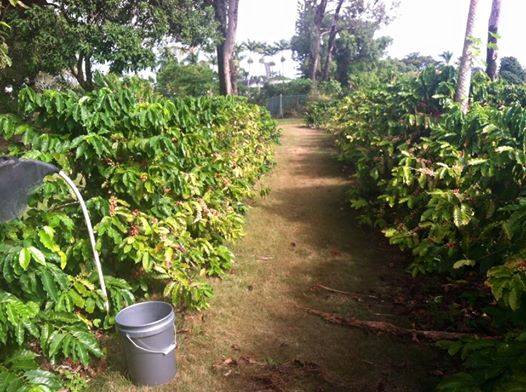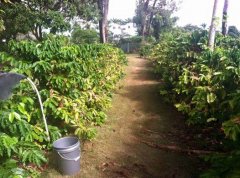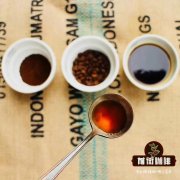Costa Rica once banned the cultivation of robusta coffee and now dominates the world with honey-treated coffee.

Professional coffee knowledge exchange more coffee bean information please follow the coffee workshop (Wechat official account cafe_style)
[coffee producing trip] Costa Rican coffee, once banned from planting Robusta, now dominates the world with honey treatment
Costa Rican forest
The Costa Rican coffee industry began to develop very early, shipping coffee to Colombia and Chile in 1820, and in 1845, with the assistance of the captain of the British merchant ship the Sovereign, a hundred pounds of coffee was transported to London. and by the British aristocracy called "golden beans from Costa Rica".
Gradually, coffee has become the main cash crop in Costa Rica, and coffee farmers have a very high status in Costa Rica. But interestingly, Costa Rican law allows only Arabica trees, and Robusta coffee trees are contraband in Costa Rica, which is indeed rare in the world!
Schematic diagram of Costa Rican coffee forest
Costa Rican coffee flavor-alcohol thickness and acidity balance
Costa Rican coffee has a good balance. Compared with the sharpness of Guatemala, Costa Rican coffee is much milder and softer, with sour, sweet and bitter smell of chocolate, which is the classic flavor of gourmet coffee! Costa Rican coffee flavor, in fact, will change according to different elevations, high altitude mountain acidity is stronger, alcohol thickness is clear, and the lower the altitude, the smoother the taste!
Costa Rica-Coffee producing area
Costa Rican coffee has seven major coffee producing areas, and the quality of the sloping coffee facing the Pacific Ocean is better than that facing the Atlantic Ocean. Some of the more well-known producing areas are the Central Valley, Tarazu and Sanhe areas, and the Laminita Farm (La Minita), located in the Tarazhu region, is a world-famous coffee farm!
"Raminita" actually means "small gold mine". Before the Yaya colonized, the Indians dug gold mines at the location of Raminita Farm!
It is not without reason that Raminita Farm is so famous. This farm produces about 1 million pounds of coffee beans every year. After layers of checks, only 290000 pounds of high-end products can be sold in the boutique coffee market, which means that 70% of the coffee beans have been eliminated. The degree of strict quality control is admirable! Raminita's coffee has sour aromas of apple and citrus, as well as rich flavors of milk and truffles, which are as delicate and elegant as silk on the palate.
Costa Rican coffee raw beans
Costa Rican coffee originates "honey treatment"
In fact, most of Costa Rica is washed with water, but in recent years, "Honey Coffee" has appeared, mainly improving the half-sun method in Brazil, trying to completely retain the pectin layer stuck to the shell beans (Brazil scraped off part of the pectin layer), and after peeling, put the sticky shell beans in the outdoor viaduct for about one to two weeks of exposure and air-drying. The whole process is dried by sunlight (Brazil is placed on the cement floor and exposed only for one to three days, and the rest is dried by a machine), so it is more obvious in sweetness, also known as "sweet as honey" treatment!
I have introduced the treasure manor in Costa Rica, which specializes in black honey treatment: the treasure manor in Costa Rica, a boutique coffee producing area valued by Costa Rica.
Honey treatment is actually very labor-intensive. You have to turn the shell beans every other hour to make the beans evenly dry, and one of the major disadvantages is that the risk is very high, mainly because Costa Rica is not actually drier than Brazil. However, using this long-term exposure treatment, wet weather is easy to mildew, but it also reflects the high level of Costa Rican coffee!
Coffee and honey
Costa Rican coffee and honey
Conclusion
In addition to being unique in coffee processing, Costa Rica is also famous for its coffee production that pays attention to environmental protection and prevention of public hazards. It is worth learning from other coffee countries to adopt the processing method of giving priority to the environment.
END
Important Notice :
前街咖啡 FrontStreet Coffee has moved to new addredd:
FrontStreet Coffee Address: 315,Donghua East Road,GuangZhou
Tel:020 38364473
- Prev

Costa Rica once banned the cultivation of robusta coffee and now dominates the world with honey-treated coffee.
Professional coffee knowledge exchange more coffee bean information please follow the coffee workshop (Wechat official account cafe_style) [Coffee producing trip] Costa Rican coffee once banned the cultivation of Robusta, now the Costa Rican coffee industry began to develop very early in the Costa Rican forest with honey, and coffee was shipped to Colombia and Chile in 1820.
- Next

The latest release | A new cooking posture competes with the black honey of Shumawa Manor in Costa Rica.
Professional coffee knowledge exchange more coffee bean information please follow the coffee workshop (Wechat official account cafe_style) Costa Rica has seven coffee producing areas, of which Tarazu, the central valley and the western valley are the three best-known and best-quality areas. Finca Sumava de Lourdes is located in the western valley of Costa Rica, near Orange County.
Related
- Detailed explanation of Jadeite planting Land in Panamanian Jadeite Manor introduction to the grading system of Jadeite competitive bidding, Red bid, Green bid and Rose Summer
- Story of Coffee planting in Brenka region of Costa Rica Stonehenge Manor anaerobic heavy honey treatment of flavor mouth
- What's on the barrel of Blue Mountain Coffee beans?
- Can American coffee also pull flowers? How to use hot American style to pull out a good-looking pattern?
- Can you make a cold extract with coffee beans? What is the right proportion for cold-extracted coffee formula?
- Indonesian PWN Gold Mandrine Coffee Origin Features Flavor How to Chong? Mandolin coffee is American.
- A brief introduction to the flavor characteristics of Brazilian yellow bourbon coffee beans
- What is the effect of different water quality on the flavor of cold-extracted coffee? What kind of water is best for brewing coffee?
- Why do you think of Rose Summer whenever you mention Panamanian coffee?
- Introduction to the characteristics of authentic blue mountain coffee bean producing areas? What is the CIB Coffee Authority in Jamaica?

